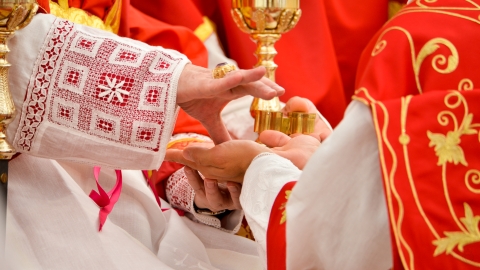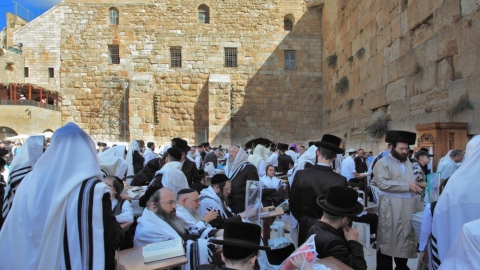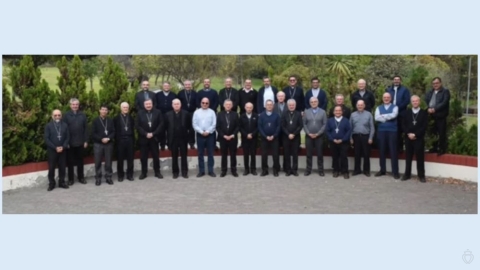Poland: Recognition of a Eucharistic miracle

The bishop of Legnica in western Poland approved, on April 17, 2016, the veneration of a bleeding Host with “the characteristics of a Eucharistic miracle.” On Christmas Day 2013, a consecrated Host fell to the ground. It was picked up and placed in a container of water in which it was supposed to dissolve. Not only did the Host not dissolve, but red stains appeared on it in some areas. Bishop Stefan Cichy, bishop of the place at the time, set up a committee to study the phenomenon. In February 2014, a fragment was taken on a corporal and send to the National Forensics Laboratory for analysis.
According to the results, the fragment is composed of striated muscle tissue “very similar to myocardial tissue (heart muscle) with alterations that frequently appear during the agony.” DNA analysis concluded that the fragment was human myocardium.
The new bishop of Legnica, Bishop Zbigniew Kiernikowski, presented the facts to the Congregation for the Doctrine of the Faith (CDF) in January 2016. A few weeks later, the Congregation recognized the miracle. In April 2016, in accordance with Rome’s recommendations, the Polish bishop requested that an appropriate location for the veneration of this relic be prepared. “I hope this will deepen devotion to the Eucharist and will have a profound effect on the lives of those who come before the Relic,” the bishop wrote in his statement dated April 10, extracts of which were quoted by La Croix on April 19.
The French daily also emphasized that “the fact that the miracle took place in Legnica is not accidental.” This city was the scene of a historic battle against the Mongols in 1241 which, despite Poland’s defeat, put a halt to the devastations of the invaders in the region. In the 20th century, the Soviets set up an important garrison of the Red Army there, entirely composed of soldiers from Central Asia… The fact that the miracle took place in this neo-Gothic church is not accidental either. It was built as a Protestant place of worship in the early 20th century, and was turned into a stable by the Reds. Later restored, it remained without any particular affiliation until 1972 when it was turned into a [Catholic] parish church. Since 2002, it has been a diocesan sanctuary dedicated to St. Hyacinth, the first Polish Dominican. As La Croix emphasizes, “it is without doubt the only case in Poland, over the last 50 years, of a former Protestant temple turned into a Catholic church.”
(Sources: kipa-apic.ch – La Croix – DICI no. 335, 06/05/16)





